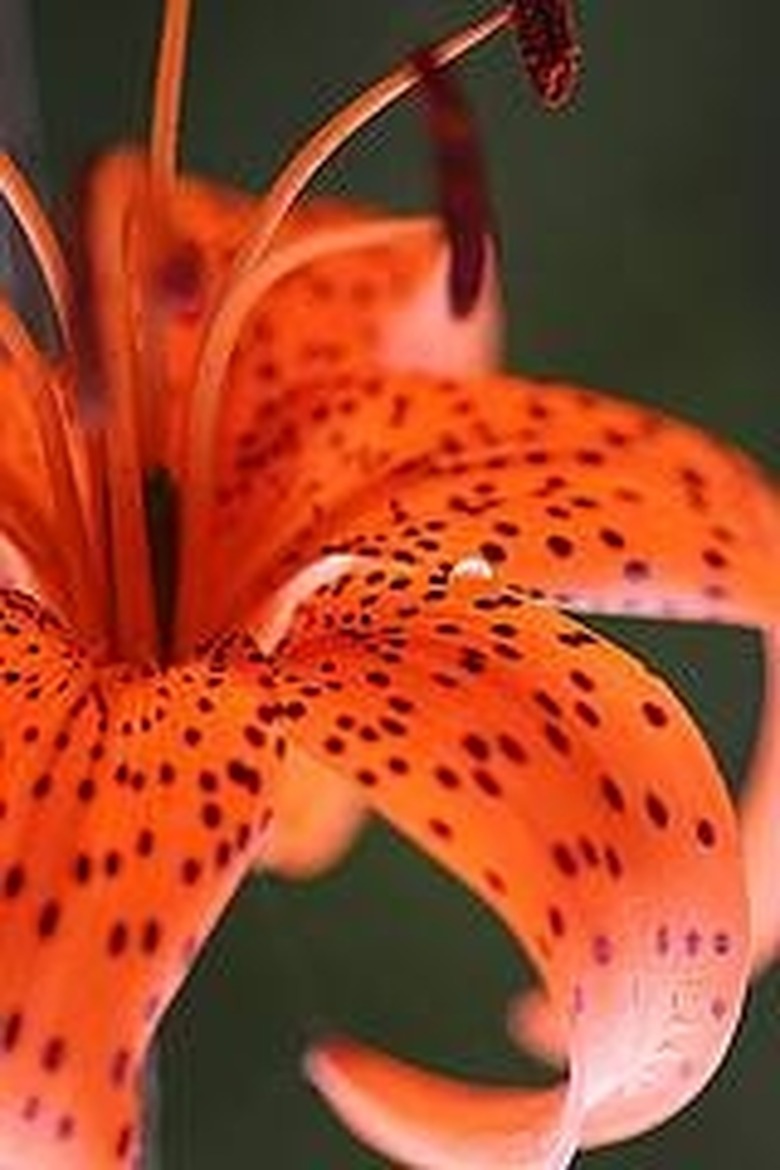Facts About The Tiger Lily Flower
The tiger lily is a large orange flower that is covered with dark spots on its petals. The tiger lily can grow up to 3 inches across and has a strong, sweet scent. It's also called the "ditch lily," as it can be seen growing, wild, in ditches. If you are so inclined, it's good to know that this showy flower is edible. For this reason, they make beautiful wedding cake decorations, food presentations, and the bulbs are edible, as well.
History
Its first written descriptions were by a famous Swedish botanist, Carl Von Linne, in 1753. However, in Chinese literature it was mentioned in writings of the 10th century, where it was planted in rows for food. William Kerr introduced the flower, from Canton, China, to Britain in 1804. By the mid-20th century, this plant had lost its usage, for the most part, as a food and became a favorite garden flower.
Types
There are two types of tiger lily: the common wildflower type and the oriental type. The oriental tiger lily must be planted by bulbs that can later be dug up and divided. The wildflower type grows from tuberous roots. The name of the tiger lily varies throughout the U.S. It is also known as Devil Lily, Leopard Lily, Columbia Lily, Oregon Lily, Western Wood Lily, Lilium Catesbaei, Chalice-Cup Lily and Lilium Tigrinum.
Growing
The tiger lily is an easy flower to grow. You just need to keep the soil damp, as they like to be in moist soil. This flower does not reseed or even produce seeds, but by bulbs. The bulbs can be planted in the fall for mid-summer blooms. You do not need to apply fertilizer, unless your soil is particularly poor. Some bulb plants and flowers must be dug up in the winter; not so for the tiger lily, which actually needs the winter cold to produce. When planting the bulbs, they should be placed 9 to 12 inches apart, 6 inches deep and in a location with full sun exposure.
Features
The bloom size of the tiger lily can grow from 4 to 6 inches long and 3 inches wide, making a bright and showy statement in your garden or yard. The flower is bright orange to red in color, and has black spots on the petals, with six stamens. It stands very tall and makes a lovely backdrop to a garden area. It is generally described as a perennial (comes back each year) or an herb (because it is edible). This plant produces narrow, 2-inch-wide leaves.
Food
The bulbs of the tiger lily were/are dug up and boiled or steams by native Americans as well as in some oriental countries. They taste much like potatoes. The are eaten as a delicacy, not a common food. They are often found in the Chinese dish moo shu pork. Another dish prepared with the tiger lily bulb is a brown pear dessert dish in which the bulb is placed inside the pear along with sugar and then it is steamed.
